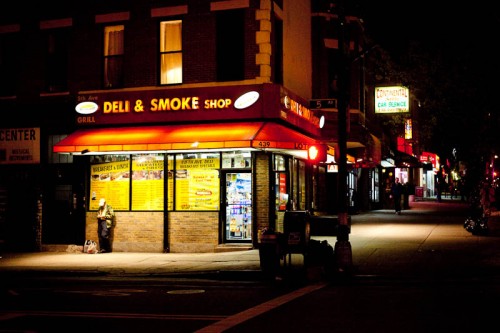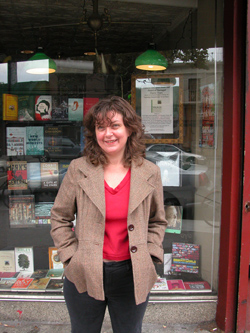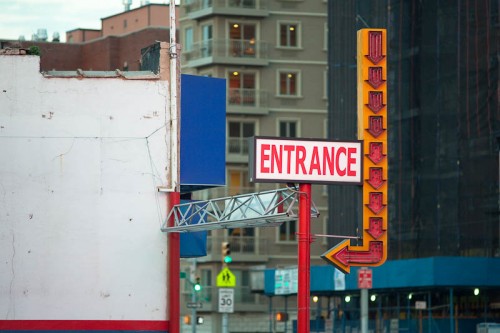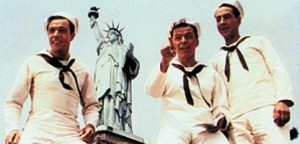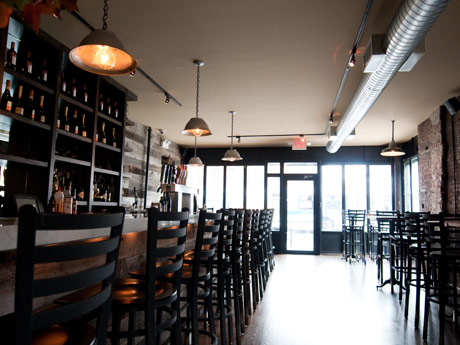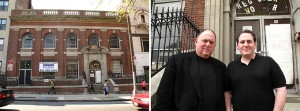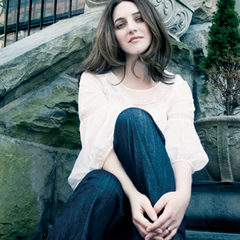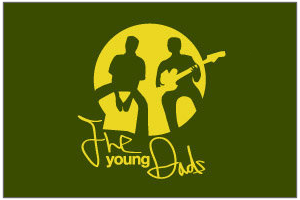This week’s Diva is Indigo Street, guitarist/singer/songwriter, who performs solo as well as with Shahzad Ismaily/101 Crustaceans/Landlady. Sarah met Indigo at the wonderful Walter Foods in Williamsburg for some lobster rolls and strong drinks.
 Sarah: Tell me about your travels as a kid. Why’d you run away from home at fifteen?
Sarah: Tell me about your travels as a kid. Why’d you run away from home at fifteen?
Indigo: I grew up in a fairly small, privileged part of the NYC arts community. By the time I was twelve I’d danced at Lincoln Center and BAM, and even Madison Square Garden, so the stuff other people can’t wait to get to NY to do seemed sort of pedestrian to me. I felt there was something else out there. It was all very fantasy-based, very bohemian. I went to Woodstock with some friends for the weekend. I saw this guy walking through town barefoot, holding a guitar. I think he was wearing a buckskin vest. The next weekend I lied to my mother and told her I was going back to stay with friends. She dropped me off and I just sat under a tree in the center of Woodstock and waited for the guy with the guitar.
Sarah: Did he show up?
Indigo: After an hour and a half, he walked up to me and sat down. We ate ice cream for dinner and slept in the woods. It was very romantic. We hid out for a while in a half-built house that was just the wood frame, which is my favorite stage in the life of a house. Crows perched on the window-less windowsills. People kept telling me the police were walking around town with my picture, so on the fourth night we got someone to drive us over to her place. It was the middle of the night and she came down in her nightgown, and she was so cool. I remember her asking if anyone wanted a cup of tea, which in retrospect is amazing, ’cause I had been so horrible and inconsiderate.
Sarah: How long did you stay home?
Indigo: A few days, then I went back on the road. I was at college briefly, but I got kicked out. You’re not supposed to be able to get kicked out of Simon’s Rock, but somehow I managed. I moved back to NY at about 17.
Sarah: What’s more important to you: sex, drugs, or rock and roll?
Indigo: Ooh, that’s hard. Right now I’m pretty much trying to abstain, so I’m liable to say sex. And though occasional, my love of drugs is holding strong. Altered states can facilitate great music making, and music making, itself, can produce some of the best altered states! I guess that’s what formed that holy trinity in the first place.
Sarah: How do you get so many different sounds out of the guitar?
Indigo: Often, rock guitarists rely on pedals to get different sounds, but I feel fortunate in that I didn’t learn to use them earlier. It made me learn to use the pick to vary the sound, different parts of my fingers, different articulations. I used to have an apple corer I loved to play with. It came in handy when I broke my wrist.
Sarah: What are the advantages of being self-taught as a musician?
Indigo: It makes invention easier. It more easily creates a musician who has their own voice rather than someone who is proficient but has trouble being original. Being self-taught gives you idiosyncratic skills and gaps. But that’s okay, because my main goal has always been to remove craft and artifice and get to the emotional heart of things.
Sarah: What does avant-garde mean to you?
Indigo: That’s an interesting question. I think that 30 years ago it just meant music that was pushing boundaries, music people hadn’t heard before. New. But now there’s a specific sound attached, even a specific location – the downtown scene, places like the Stone – this kind of sound that’s without a melody, often without a key. I like a lot of that music, and as a guitarist enjoy playing that type of music, but as a writer that doesn’t feel like the truest expression for me. I have to be careful not to worry about what is new for other people. I try to create something that’s new for me, allowing it to feel as simple as possible and to include any and all influences.
Sarah: A lot of people are worried about shedding their influences.
Indigo: Not me. I feel that imitation is possibly the most important part of being an artist. Being an artist is a spiritual practice. It’s devotional, and you find your devotion by connecting to the people who have come before you in your art form. By paying careful attention to what moves you, circling around it, you circle around yourself, really. That’s how you find the kernel of yourself. I mean, I spent years in my bedroom imitating Ray Charles, learning his albums note for note. There is no danger I’ll ever be accused of sounding like Ray Charles! But when I listen to him and I feel like my head will explode, that’s who I am. That love.
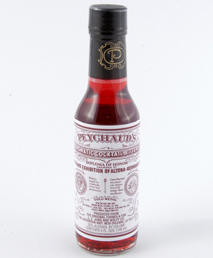 THE SAZERAC
THE SAZERAC
After giving up heroin, Ray Charles had the same drink every day for the rest of his life: half a mug of black coffee with half a mug of Bols gin and two sugars. We should pick and choose what we imitate. Instead I recommend the Sazerac, the classic New Orleans whiskey drink, which they make exceptionally well at Walter. This will put you in the mood for sex, drugs, rock and roll, and everything.
Mix in cocktail shaker filled with ice:
2 ounces rye (also delicious made with Cognac, or a mix of half-Cognac, half-rye)
1 barspoon simple syrup
3 dashes Peychaud’s bitters
Stir for a long time. Fill a short rocks glass with ice and drizzle a little absinthe over the ice. Swirl it around, then discard ice and absinthe. Strain the cocktail into the absinthe-rinsed glass. Twist a lemon rind over the top, rub around rim, and drop in.

